Caesium: A brief history of timekeeping
- Published
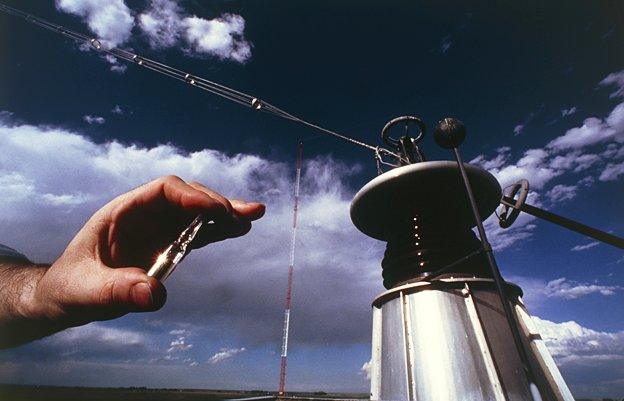
Caesium centre: a relay station in Colorado where atomic time signals are transmitted across the US
Caesium is the chemical element that has literally redefined time.
All your life you'll have been told the importance of being on time. Well, thanks to caesium the entire world now keeps time so accurately that it has forced us to reconsider what time really is. It has also introduced a bizarre bug into timekeeping.
Measuring time accurately is actually quite a recent preoccupation. I'm not saying our ancestors didn't want to know the time, of course they did. For millennia mankind has been creating ingenious devices to gauge the passage of time.
But the truth is that, until about 175 years ago, it was the sun that defined time. Wherever you were, high noon was high noon, and on a clear day a quick glance up into the sky or down at a sundial told you everything you needed to know.
That all began to change with the world's first railways, here in the UK.
Then the fact that midday in London was 10 minutes before midday in Bristol - because that was how long it took the sun to figuratively sail west across the sky - became an issue, and a very serious one.
It wasn't just that passengers would miss their trains. Inconsistencies in timekeeping were causing an increasing number of near misses and even train crashes.
In November 1840 the Great Western Railway solved the problem with "Railway Time". It imposed London time across the whole network, the first occasion time was synchronised between different locations to a single standard.
The move was very controversial. Suddenly, your time of day was to be dictated by the Royal Observatory in faraway Greenwich.
The Dean of Exeter stoutly refused to adjust the Exeter Cathedral clock to meet the demands of the railway company. In Bristol a compromise was found: two minute hands, one showing local time, the other Railway Time.
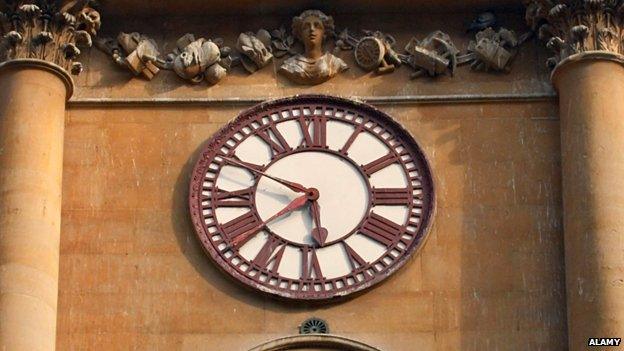
This clock in Bristol still has two minute hands 10 minutes apart
Nevertheless Railway Time gradually became the standard across Britain, and the same happened around the world wherever railways were built.
But what does all this have to do with caesium, you are probably asking yourself?
The answer is that whenever you have a network operating over distance, accurate timekeeping is essential for synchronisation. And the faster the speed of travel, the more accurate the timekeeping must be. Hence in the modern world, where information travels at almost the speed of light down wires or through the air, accuracy is more important than ever.
What caesium has done is to raise the standards for the measurement of time exponentially.
I took a trip to the home of accurate timekeeping in Britain. It isn't Greenwich, but the National Physical Laboratory in the leafy London suburb of Teddington.
The series of off-the-peg glass office buildings located on an upmarket industrial park belie the exotic endeavours that take place within.
The NPL is one of the world's leading centres for research into the measurement of time and is where the British standards for the seven key scientific units of measurement are kept.
It was here in the 1930s that the physicist Louis Essen developed the first quartz ring clock, the most accurate timepiece of its day, and a precursor of the caesium clock.
Quartz clocks exploit the fact that quartz crystals vibrate at a very high frequency if the right electrical charge is applied to them. This is known as a resonant frequency, everything on earth has one.
It is hitting the resonant frequency of a champagne glass that - allegedly - allows a soprano to shatter it when she hits her top note. It also explains why a suspension bridge at Broughton in Lancashire collapsed in 1831. Troops marching over it inadvertently hit its "resonant frequency", setting up such a strong vibration the bolts sheared. Ever since, troops have been warned to "break step" when crossing suspension bridges.

Coming up: The resonant frequency of a champagne glass
To understand how this phenomenon helps you to measure time, think of the pendulum of a grandfather clock. The clock mechanism counts a second each time it swings.
Quartz plays the same role as a pendulum, just a lot quicker: it vibrates at a resonant frequency many thousands of times a second.
And that's where caesium comes in. It has a far higher resonant frequency even than quartz - 9,192,631,770 Hz, to be precise. This is one reason Essen used the element to make the first of the next generation of clocks - the "atomic" clocks.
Essen's quartz creation erred just one second in three years. His first atomic clock created at NPL in 1955 was accurate to one second in 1.4 million years.
But why caesium?
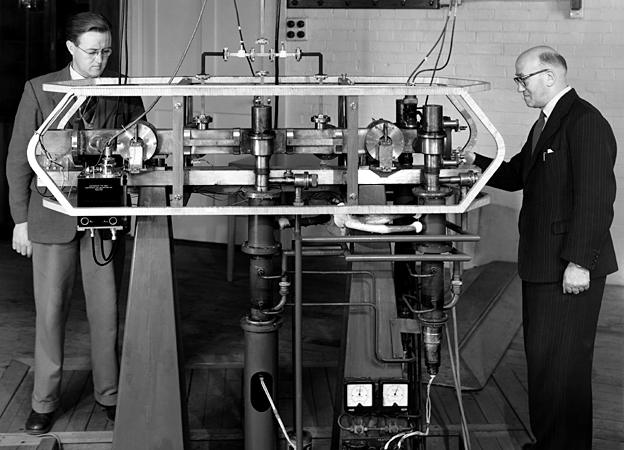
Louis Essen (right) created the first caesium resonator in 1955
In a lab on the NPL site, chemistry professor Andrea Sella of University College London produces a tin can with a flourish. He opens it up and pulls out a wad of fabric padding. Wrapped inside is a sealed glass ampoule full of a silvery-gold metal.
He warms the ampoule in his hand. The metal gradually melts into liquid.
"Don't drop it," he warns when I take the ampoule.
He explains that the careful packaging is necessary because caesium is an alkali metal, from the first column of the periodic table. As such, it is very reactive, even more so than sodium or potassium.
"Drop it into water," he warns, "and it will release hydrogen and there will be a very loud bang because the hydrogen will explode, external."
Being in column one means that caesium has a single electron in its outer shell. That is what makes it so chemically reactive, and it was also the behaviour of this electron that Essen was interested in.

Caesium: Key facts
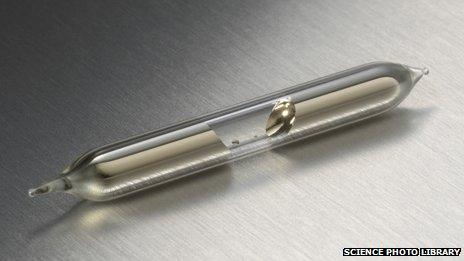
Discovered in 1860 by German scientists Robert Bunsen and Gustav Kirchhoff
A silvery metal with a golden cast, it is the most reactive and one of the softest of all metals
Melting point of 28.4C means it is a liquid just above room temperature
Reacts explosively with water and also spontaneously in air
About half as abundant as lead and 70 times as abundant as silver

I'm led to a room deep inside the NPL complex protected by a state-of-the-art electronic lock. This is where they keep the machine that sets the standard for the measurement of time in Britain.
It is known as the "caesium fountain" and inside the room I meet the keeper of the fountain, Krzysztof Szymaniec.
Don't imagine the sort of fountain that plays in the gardens of a palace, this looks like a domestic hot water tank made of stainless steel with all sorts of extra wires and other gubbins attached at the bottom.
It may not be pretty, but it is one of the most accurate clocks on earth.
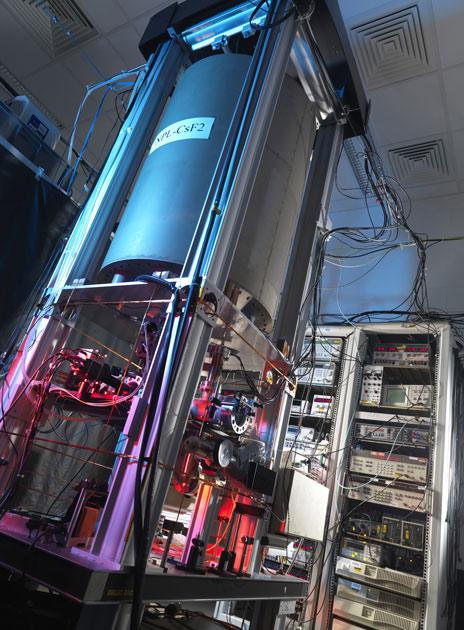
Szymaniec explains it works by using a series of lasers to push a group of caesium atoms so tightly together that they almost stop vibrating, dropping their temperature to a smidgen above absolute zero.
Other lasers launch this atomic "molasses" up into the tank bit of the machine. The atoms fall back under gravity - hence "fountain".
What the machine does next is tune a beam of microwave radiation into the resonant frequency of the caesium. Just like champagne glasses and bridges, when you hit the right frequency the caesium gets excited, and what happens is that outermost electron jumps into a wider orbit. This is known as a "transition".

Robert Bunsen co-discovered Caesium in 1860
As the electron moves out into the wider orbit it absorbs energy, and as it jumps back in it releases it in the form of light, fluorescing very slightly. That means you can tell when you've hit the sweet spot of 9,192,631,770 Hz. It's because this transition frequency is so much higher than the resonant frequency of quartz that a caesium clock is so much more accurate.
The caesium fountain at NPL, Szymaniec tells me proudly, is accurate to one second in every 158 million years. That means it would only be a second out if it had started keeping time back in the peak of the Jurassic Period when diplodocus were lumbering around and pterodactyls wheeling in the sky.
But modern technology means these days even more staggeringly accurate clocks are possible.
That's because caesium was always a compromise element when it came to timekeeping. Louis Essen chose caesium, explains Szymaniec, because the frequency of its transition was at the limit of what the technology of his day could measure.
We now have new ways of measuring time.
At NPL they are experimenting with the elements strontium and ytterbium that operate at far, far higher frequencies - right up in the optical rather than the microwave spectrum.
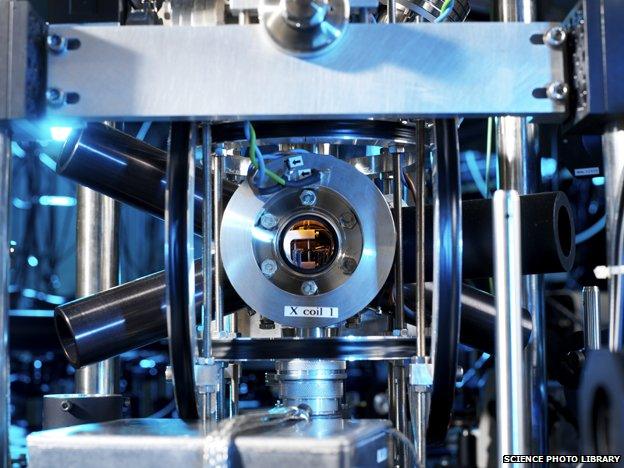
Optical clocks with strontium or ytterbium, such as this one, are even more accurate than caesium clocks
The frequency of the transition of strontium, for example, is 444,779,044,095,486.71 Hz. A strontium clock developed in the US would only have lost a second since the earth began: it is accurate to a second in five billion years.
The scientists at NPL reckon optical clocks that keep time to within one second in 14 billion years are on the horizon - that's longer than the universe has been around.
Now, if such insane levels of accuracy seem pointless, then think again. Without the caesium clock, for example, satellite navigation would be impossible. GPS satellites carry synchronised caesium clocks that enable them collectively to triangulate your position and work out where on earth you are.
And the practical applications do not end there. Just ask Leon Lobo - he's in charge of time "dissemination" at NPL. His job is to tell the time to the UK. For a fee.
NPL has just begun offering businesses standardised timekeeping accurate to the nearest microsecond - a millionth of a second. Mr Lobo is targeting a wide range of clients that all have one thing in common - they need to synchronise a network that operates at speeds far faster than any trains.
Consider for example electricity grids. As wind and solar energy become more widespread, the grid will need to time accurately its reactions to unexpected lulls in the wind or passing clouds. Get that wrong, and you end up with blackouts.
Mr Lobo's biggest target is the financial markets, which these days are dominated by computers programmed to place thousands of trades per second, transmitted down wires at almost the speed of light.
In this world, the equivalent of a train crash would be ill-timed bets that rack up millions of dollars in losses, and might even briefly sink the market in the process. Unsurprisingly, financial regulators increasingly require a super-accurate timestamp on every transaction.
But the accuracy of caesium clocks has introduced a potentially disastrous glitch into the world's timekeeping. To understand why, we need to rewind to 1967.
That year, the official international standard second was redefined based on the caesium transition. Yes, caesium has redefined time itself.

Definition of a second
The duration of 9,192,631,770 periods of the radiation corresponding to the transition between the two hyperfine levels of the ground state of the caesium-133 atom
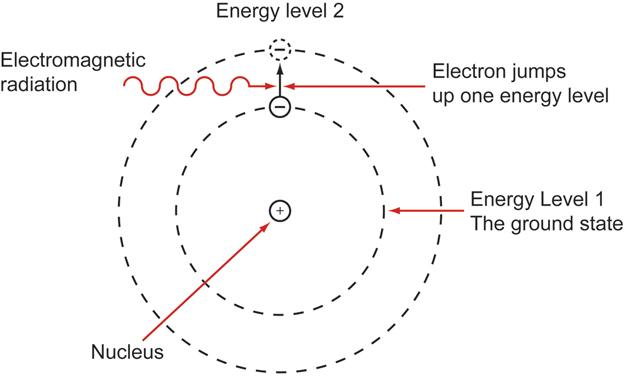

It was a momentous decision. Until then, mankind had always defined time (even Railway Time) by reference to the movement of the sun relative to the earth. No more. The sun was dethroned, and caesium took its place - though one wonders how long it will be before strontium or ytterbium knocks caesium off its perch.
The switch to atomic time was for good reason. The rotation of the earth, it turned out, was not such a reliable measure of time. No day or year is exactly the same length.
First off, the earth is very gradually slowing down and thus the average day is getting infinitesimally longer. Then you have to add in the idiosyncrasies of oceanic tides, tectonic drift and the convection of the earth's mantle, all of which cause minuscule wobbles.
This is a big issue for Felicitas Arias, whose job is to keep time for the entire world. She is the director of time at the International Bureau of Weights and Measures (BIPM) in Paris, which is responsible for ensuring the uniformity of measurements worldwide and maintains the modern time standard, Coordinated Universal Time (UTC).
When UTC was first adopted in the 1960s, long before the advent of GPS, it posed a potential problem for sailors, who still relied on clocks to work out their longitude on the high seas.

More from the Magazine
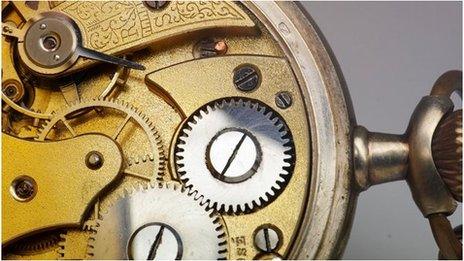
"Who first designed a more accurate timekeeper was once more than a matter of academic interest. In the late 17th Century, clock and watch design was part of national security. Navigation and mapping were both essential for the successful conduct of war - and England was involved in a sequence of wars against the French and the Dutch in this period."

They still exploited a system that the super-accurate clocks of another British pioneer of timekeeping, John Harrison, had first made possible in 1761. They compared the position of the sun or the stars at their particular location, with the time on a clock taken from another fixed location, typically Greenwich. Every four minutes' difference represented a single degree east or west.
But in order for this technique to continue working, they insisted that UTC remain synchronised with the earth's wobbly rotation. And that means every now and then an extra "leap second" is inserted. And it is Ms Arias' job to decide when.
"For a long time leap seconds came every two years," she tells me. "Then we had seven years without leap seconds. Then they came back every two or two-and-a-half years."
But every time a leap second needs to be inserted, all the atomic clocks across the world need to be changed.
Most of us wouldn't notice a second or two every couple of years, but computers do. They might momentarily shut down, which would, apparently, make them vulnerable to cyber-attack. Or they could get out of sync, leading to electronic train crashes.
It hasn't happened yet but Ms Arias believes the consequences could be disastrous.
"One second in the financial markets can provoke a kind of earthquake," she warns.
The prospect of City traders losing out on million-dollar deals may not fill you with horror, but she's worried that as power stations, mobile phone networks and satellite navigation systems are increasingly synched to caesium time they could fail too.
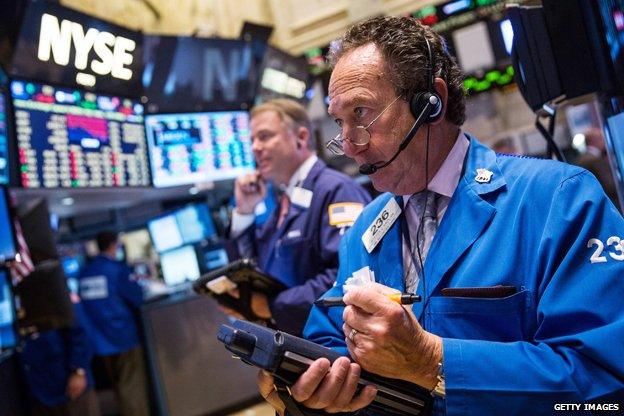
Time is money, especially when it comes to trading at the New York Stock Exchange
That's why there is a move now to get rid of leap seconds completely and go over to unadulterated atomic time. Most sailors already use satellite navigation, so it might not be such a serious problem for them today as it was in the past. But severing the link between time and the motion of the celestial bodies completely would have some significant consequences.
Because the earth's spin is slowing, the time on your watch would gradually diverge from the rising and setting of the sun.
"We can predict that in a thousand years we could be one hour out," she says.
She's surprisingly relaxed about the prospect. She points out that most of us are already out of sync with solar time.
Due to the earth's elliptical orbit, the sun can be as much as 16 minutes out of line with mean solar time. Add the distortion of time zones, which average time across huge regions, and the difference is far greater. China, which is almost 5,000km wide, has a single time zone spanning 1h40 of solar time.
The decision of some countries to adjust the clocks twice a year as a "daylight saving" measure exaggerates the issue yet further.
Nevertheless many nations resist the move to end leap seconds. The UK, for example, whose Greenwich Meridian was for centuries the benchmark for global timekeeping, insists that leap seconds are not a serious inconvenience.
And maybe that is a reasonable position given just how slippery the whole concept of time can be.
In 1971 scientists sent three caesium clocks around the world on commercial airliners. When they returned they were compared with caesium clocks that had stayed at home in the United States Naval Observatory.
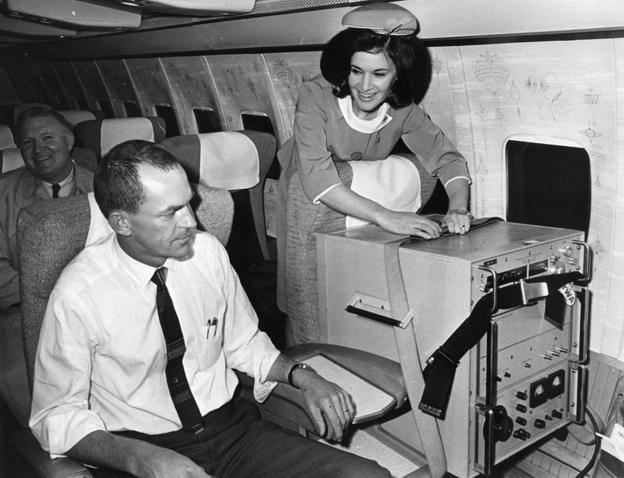
Five years before the effects of flight were tested scientifically, this caesium clock travelled first class from London to the US - it had to be plugged into a power socket, and strapped in with a seatbelt
The jet-setting clocks were found to be slower by exactly the amount Einstein's theories of relativity predicted. Thereby proving his hypothesis that the speed at which time passes depends on where you are in the universe and how fast you are moving.
Today, the clocks aboard GPS satellites have to be adjusted to take account of precisely this effect.
And the new generation of insanely accurate optical clocks may make use of relativity to map the gravitation field of the earth, by measuring the minute differences in recorded time caused by the effect of gravity.
But stop and consider the irony here. Caesium clocks have proved that an absolute measure of time is - impossible.
Subscribe to the BBC News Magazine's email newsletter to get articles sent to your inbox.